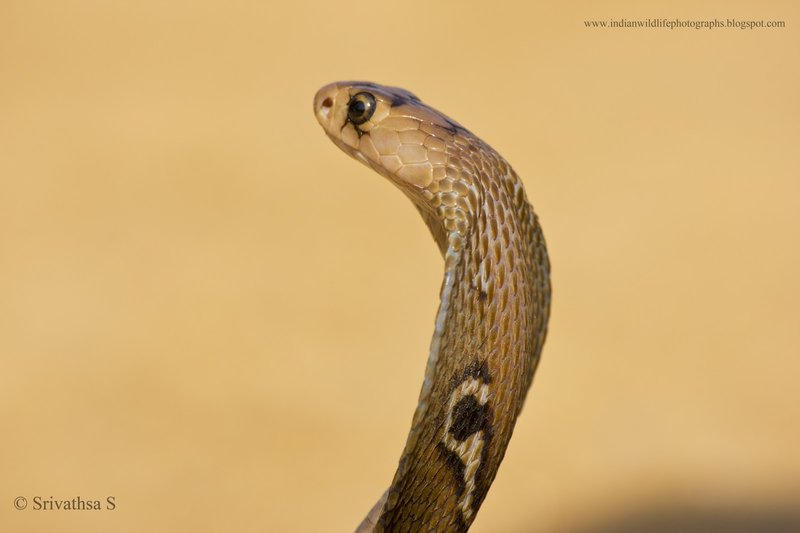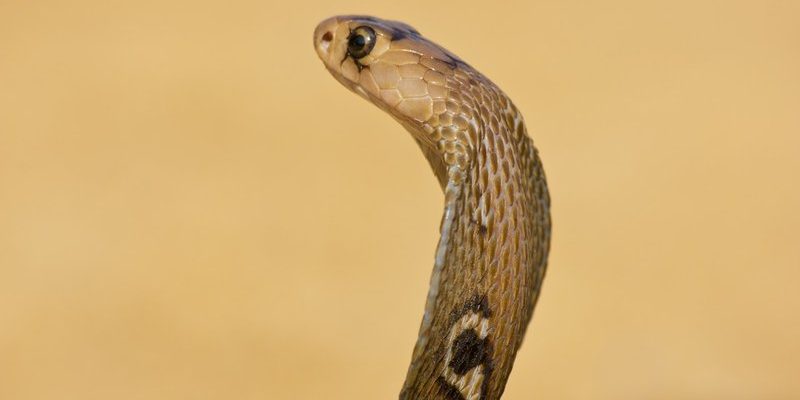
The Indian Cobra, often admired for its striking appearance and fascinating behavior, is a captivating creature found primarily in the Indian subcontinent. While many of us think of cobras as land-dwelling snakes, the Indian Cobra (Semi-Aquatic) takes it a step further. This unique variant has adapted to a lifestyle that includes semi-aquatic habitats, giving it a distinct edge when it comes to hunting and evading predators. Imagine a sleek, patterned snake gliding through the water with ease, ready to strike at a moment’s notice. That’s the beauty of the Indian Cobra.
You might be wondering what makes this semi-aquatic version stand out from its terrestrial cousins. Well, the Indian Cobra is not only adept at slithering on land but has also developed the ability to navigate through shallow waters. This adaptation allows it to hunt fish and amphibians, enhancing its diet and survival strategy. Depending on where it resides, you may find this fascinating reptile in rivers, marshes, or wetlands, coexisting with an array of wildlife.
| Common Name: | Indian Cobra (Semi-Aquatic) |
| Scientific Name: | Naja naja |
| Habitat: | Rivers, marshes, and wetlands |
| Size: | 3 to 5.5 feet (0.9 to 1.7 m) |
| Diet: | Small mammals, amphibians, and fish |
| Lifespan: | 20 years in the wild and up to 30 in captivity |
| Speed: | Up to 2-3 mph on land |
Physical Characteristics
The Indian Cobra (Semi-Aquatic) showcases physical characteristics that contribute to its survival and hunting efficiency. One of the most striking features of this snake is its hood, which it expands when threatened. This behavior isn’t just for show; it serves as a warning to potential predators. The hood displays intricate patterns that can vary depending on the individual snake, but typically features shades of brown, black, and yellow.
In terms of size, these snakes can reach lengths between 3 to 5.5 feet, with some exceptional individuals attaining even longer lengths. That’s quite a stretch when you consider their agile movements both in water and on land. Their slender and elongated bodies are perfectly designed for swift swimming, allowing them to hunt effectively. The coloration helps with camouflage, blending into their surroundings whether they’re basking on a riverbank or navigating through the water.
Another notable physical trait is their eyes, which are large and positioned for optimal vision. This adaptation is crucial for spotting prey while swimming or lurking near the water’s edge. In dim light conditions or murky waters, their vision remains sharp, enabling them to actively hunt for fish and amphibians. Remarkably, they also possess a heat-sensing capability that helps them detect warm-bodied prey, enhancing their hunting success in both aquatic and terrestrial environments.
Behavior and Hunting Strategies
The behavior of the Indian Cobra (Semi-Aquatic) reveals a blend of instincts fine-tuned for survival. When it comes to hunting, this cobra exhibits a variety of strategies. They often rely on ambush tactics, waiting patiently along riverbanks or in shallow waters for unsuspecting prey to come close. This stealthy approach maximizes their chances of a successful strike, allowing them to conserve energy.
You might find it fascinating that their diet is quite diverse. While small mammals are a staple in their diet, they also enjoy a meal of fish and amphibians. This versatility allows the Indian Cobra to thrive in various habitats, adjusting its feeding habits based on the availability of prey. When hunting in water, their swimming skills come to play, enabling them to chase down slippery fish with surprising agility.
Another aspect of their behavior is their response to threats. When feeling cornered, they will hiss loudly and raise their hoods in an intimidating display. It’s not just for show; the expanded hood serves to make them appear larger and more threatening to potential predators. If intimidation fails, they can strike quickly, delivering a venomous bite that can incapacitate their attacker. This defensive behavior is crucial for survival in a world where many creatures may see them as a meal.
Habitat and Distribution
The Indian Cobra (Semi-Aquatic) primarily inhabits regions with accessible water sources, making rivers, marshes, and wetlands its preferred habitats. These areas offer a perfect blend of aquatic and terrestrial environments, providing the snake with ample hunting opportunities. In India, you can find these snakes across various states, including Maharashtra, Karnataka, and West Bengal. They thrive in both rural and semi-urban environments, often found near agricultural fields where small mammals are abundant.
As a semi-aquatic snake, they are well-adapted to life both in and out of the water. During the day, Indian Cobras may bask in the sun on riverbanks, soaking up warmth before they embark on their hunt. At dusk, they become more active, moving into the water to hunt for fish or venture onto land to search for small rodents.
However, their distribution is not without challenges. Habitat destruction due to urbanization and agriculture poses significant threats to their populations. As more land is cleared for farming and development, the availability of their preferred habitats diminishes. Conservation efforts are crucial to ensure that these remarkable snakes continue to thrive in their natural environments, preserving the delicate balance of the ecosystems they inhabit.
Conservation Status
The conservation status of the Indian Cobra (Semi-Aquatic) is something that requires attention. While they are not currently classified as endangered, threats to their habitats and populations are on the rise. Urban expansion, pollution, and agricultural practices contribute to habitat degradation, putting pressure on these snakes and other wildlife. It’s important to monitor population trends to ensure that they do not decline to a point where they become endangered.
One of the key challenges is misinformation about snakes in general. Many people fear cobras and see them as dangerous pests. This often leads to unnecessary killings, further impacting their populations. Education and awareness are essential in changing perceptions about these snakes. After all, Indian Cobras play a vital role in controlling rodent populations, which can lead to crop damage if left unchecked.
Conservationists advocate for the protection of their natural habitats and promote sustainable practices in agriculture. Implementing measures that ensure safe coexistence between humans and wildlife can go a long way in preserving the Indian Cobra’s habitats. By fostering an appreciation for these fascinating reptiles, we can help safeguard their future and maintain the biodiversity of the regions they inhabit.
FAQ
What is the lifespan of the Indian Cobra (Semi-Aquatic)?
The Indian Cobra (Semi-Aquatic) can live for approximately 20 years in the wild. In captivity, with proper care and a suitable environment, they can live up to 30 years. The variability in lifespan depends on factors such as diet, habitat quality, and predator pressures in the wild.
Are Indian Cobras (Semi-Aquatic) dangerous to humans?
While Indian Cobras are venomous, they typically avoid human interaction. Most bites occur when the snake is accidentally stepped on or provoked. They will usually hiss and display their hood as a warning before resorting to a bite. Understanding their behavior can help reduce negative encounters with humans.
How do Indian Cobras (Semi-Aquatic) hunt for food?
Indian Cobras (Semi-Aquatic) are ambush predators. They often wait beside rivers or wetlands for their prey to approach, striking with remarkable speed and accuracy. They can hunt both on land and in water, preying on small mammals, fish, and amphibians.
Can Indian Cobras (Semi-Aquatic) swim?
Yes, Indian Cobras are excellent swimmers. They have adapted to a semi-aquatic lifestyle, allowing them to glide effortlessly through water. This ability aids them in hunting fish and escaping from predators.
What do Indian Cobras (Semi-Aquatic) eat?
These snakes have a varied diet that includes small mammals, amphibians, and fish. Their flexible feeding habits allow them to adapt to changes in prey availability, thus increasing their chances of survival.
Are Indian Cobras (Semi-Aquatic) protected by law?
The Indian Cobra is listed under the Wildlife Protection Act in India. This means they are protected by law, and killing or capturing them without permission is illegal. Conservation efforts aim to educate the public about their ecological importance.
How do Indian Cobras (Semi-Aquatic) protect themselves?
When threatened, Indian Cobras will hiss and spread their hoods, making themselves appear larger to potential threats. If that doesn’t deter the attacker, they are capable of striking quickly, delivering a potent venomous bite.
Where can I find Indian Cobras (Semi-Aquatic)?
Indian Cobras are primarily found in the Indian subcontinent, inhabiting regions with access to water sources like rivers, marshes, and wetlands. States like Maharashtra and West Bengal are common habitats for these unique snakes.
What should I do if I encounter an Indian Cobra (Semi-Aquatic)?
If you happen upon an Indian Cobra, remain calm and avoid sudden movements. Give the snake space to retreat. It’s best to observe from a safe distance and allow the snake to move on. If you feel threatened, seek help from local wildlife authorities.
Can Indian Cobras (Semi-Aquatic) be kept as pets?
Keeping an Indian Cobra as a pet is not advisable for beginners. They require specialized care, a suitable environment, and a proper diet. Moreover, handling venomous snakes poses risks, and it’s essential to understand the legal restrictions on keeping such animals.
How can I help conserve Indian Cobras (Semi-Aquatic)?
You can help by supporting conservation efforts and educating others about the importance of these snakes. Avoid actions that harm their habitats, such as littering or improper agricultural practices. Promote coexistence with wildlife to ensure a healthier ecosystem.

